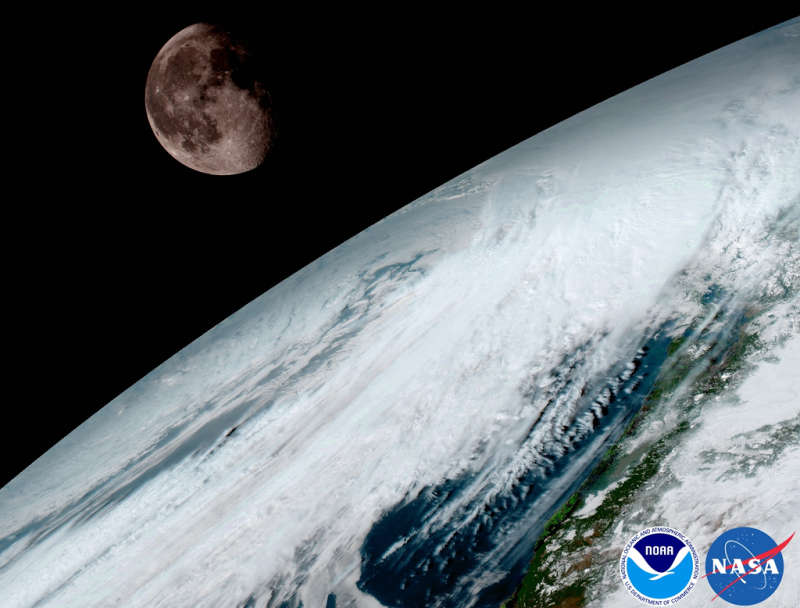Explanation: Launched last November 19 from Cape Canaveral Air Force Station, the satellite now known as GOES-16 can now observe planet Earth from a geostationary orbit 22,300 miles above the equator. Its Advanced Baseline Imager captured this contrasting view of Earth and a gibbous Moon on January 15. The stark and airless Moon is not really the focus of GOES-16, though. Capable of providing a high resolution full disk image of Earth every 15 minutes in 16 spectral channels, the new generation satellite's instrumentation is geared to provide sharper, more detailed views of Earth's dynamic weather systems and enable more accurate weather forecasting. Like previous GOES weather satellites, GOES-16 will use the moon over our fair planet as a calibration target.
Participate: Take an
Aesthetics &
Astronomy Survey
1999 2000 2001 2002 2003 2004 2005 2006 2007 2008 2009 2010 2011 2012 2013 2014 2015 2016 2017 2018 2019 2020 2021 2022 2023 2024 2025 |
Yanvar' Fevral' Mart Aprel' Mai Iyun' Iyul' Avgust Sentyabr' Oktyabr' Noyabr' Dekabr' |
NASA Web Site Statements, Warnings, and Disclaimers
NASA Official: Jay Norris. Specific rights apply.
A service of: LHEA at NASA / GSFC
& Michigan Tech. U.
|
Publikacii s klyuchevymi slovami:
Moon - Earth - Luna - Zemlya - Sputniki iskusstvennye
Publikacii so slovami: Moon - Earth - Luna - Zemlya - Sputniki iskusstvennye | |
Sm. takzhe:
Vse publikacii na tu zhe temu >> | |
